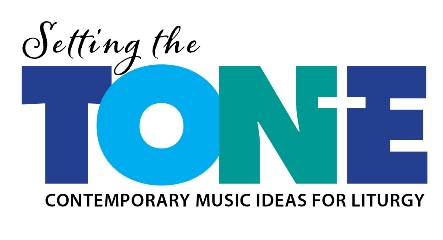Much like Gather Us In which I talked about last week, I Am the Bread of Life doesn't need help to be a good liturgical song, but sometimes it can be effective to rearrange things a bit to occasionally offer a different presentation. What follows below is essentially the same music (and text), just packaged a little differently.
Last week I mentioned that when I change things up (arrangement–wise) I often take things away, simplifying things a bit. Let's look at a typical arrangement you might find of the opening bars of this song:
Played in a traditional hymn-like fashion these chords are wonderful. When arranging it for a contemporary ensemble, or 'praise band' (drums, bass, elec/acoustic gtrs, piano, synth, etc.), it is more stylistic to simplify the progression like this:
These fewer chord changes are more typical of modern contemporary praise music, especially in slower songs. It allows time for the chords to sustain, leaving room for perhaps an interesting rhythmic pattern that drives the song. Look at this example of how a praise band might play this same, simpler arrangement:
In the above example, the bass guitar is driving the rhythm...but take note of the tempo marking! This is not a fast tempo. In the next example, the acoustic guitar is driving the song...same tempo.
This is much like what Matt Maher does on his song I Love You, Lord (spiritandsong.com) It's important to note, like in the Matt Maher example, the acoustic is being played almost constantly in a downward strum pattern, not up and down–which would sound more folksy. (here's a sample: I Love You, Lord (Maher) YouTube video)
What about the drums? The simpler chord progression leaves room for some more interesting rhythms. For the verse, we tried it with low toms happening on the second half of beat 2, and on beat 4, like this:
Speaking of the refrain, we made a couple of chord simplifications there as well. Keeping with the same style we did the following:
We added an alternate bass note in the 3rd and 4th measures. Notice also the slight changes in the 1st and 3rd measures of the piano–subtle changes that add a lot. Look also at the subtle change in the acoustic guitar in measure 3.
Again, these are just some simple ways to rearrange a classic, solid, tried-and-true piece of music. I Am the Bread of Life by Suzanne Toolan doesn't need any help to make it work, but sometimes a fresh approach is just what you need to help set the tone for a more contemporary style liturgy.






